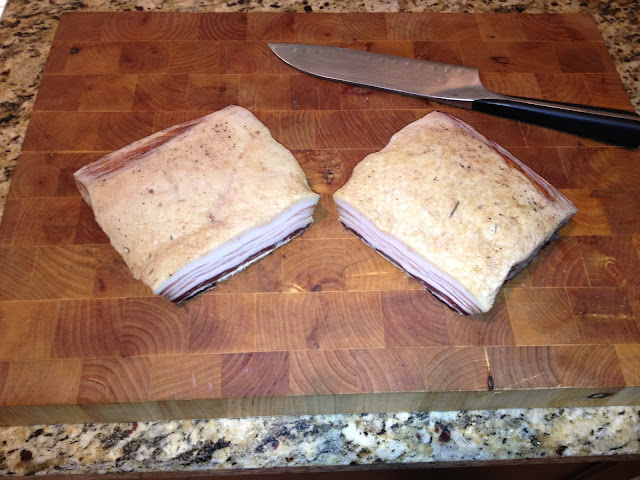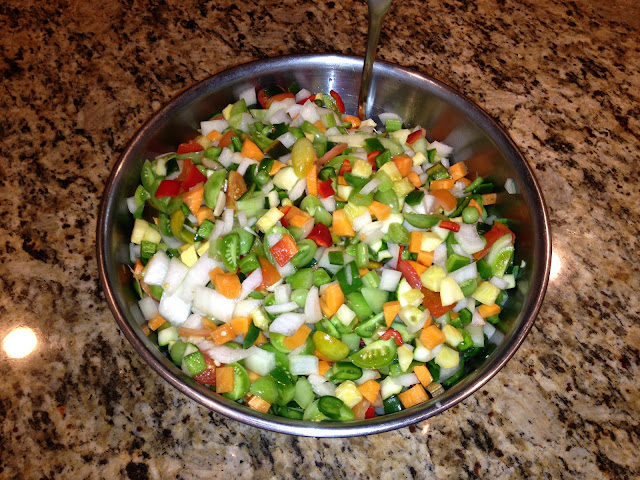This is how the Panchetta started out about four weeks ago. It cured for a little over a week with the spices, etc. in the bag, then got a good rinse and dried off. Now it has been air drying for three weeks.
 This is after three weeks of air drying. The Lardo is on the left and the Panchetta is on the right. The Lardo will continue to dry, wrapped to keep the light out, in the refrigerator for another several months.
This is after three weeks of air drying. The Lardo is on the left and the Panchetta is on the right. The Lardo will continue to dry, wrapped to keep the light out, in the refrigerator for another several months.
This is the Panchetta, sliced in two. The fat is bright white and the flesh is dense and dark. This is strong stuff, so a little goes a long way. I divided it into six pieces, about 6 oz each.
After vacuum sealing each of the pieces, I put them in the freezer. There is very little water content, so even when frozen the are pliable. They just take a few minutes to thaw. When diced and rendered they go really will in salads, pasta, chili, or any number of other things-- more as an ingredient than a stand-alone item.




















































